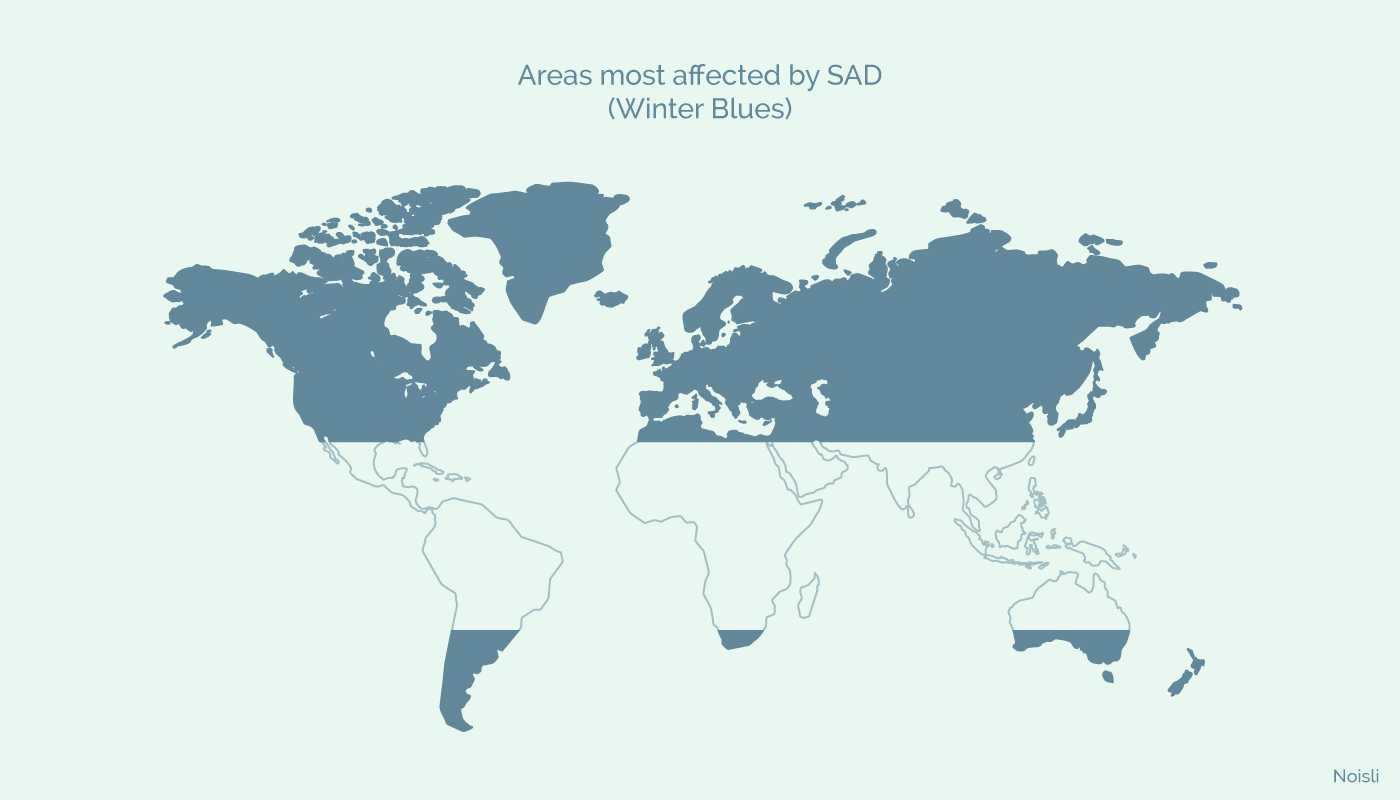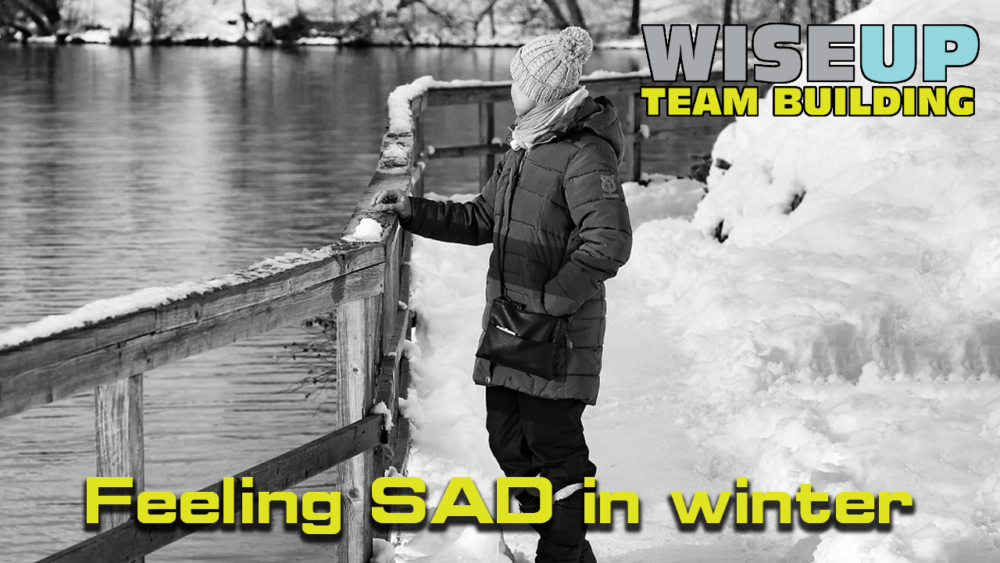The cold and dreary winter months can make us all feel a bit sad and gloomy. The dark mornings and grey days have us longing for some sunshine. But for some of us, these melancholic feelings are more intense. If you find your mood changing massively in winter, to the point were it affects your life every day, you may have Seasonal Affective Disorder (SAD).
What is SAD?
SAD is a form of depression which occurs at the same time every year. Usually, this is during the winter months. It can make you feel like a completely different person to who you are in the summer. SAD affects your sleep, mood, energy levels and appetite, all of which can take a toll on every aspect of your life. It affects between 1-2% of people and tends to be more common in women. Since the amount of sunlight we receive changes depending how far we are from the equator, SAD is mostly found in people living at a latitude of at least 30 degrees north or south.

Image Source: Noisli
Signs and Symptoms
The signs and symptoms of SAD are similar to those of depression. The way to tell if it’s SAD or depression is to see if the symptoms regress during the spring and summer months. These can include changes to your sleep pattern, feeling stressed or anxious a lot of the time and unexplained aches and pains. If you’ve lost interest in an activity you used to enjoy, this can be a big indicator. There may be a loss in self confidence, as those with SAD report feelings of hopelessness and despair. It is especially noticeable in school students who have difficulty concentrating in winter, becoming irritable or withdrawn.

Image Source: Pixabay
What causes SAD in winter?
The scientific explanation of SAD is linked to the production of certain chemicals in our bodies. Melatonin is produced when it gets dark, which tells our brains it’s time to sleep. Too much of this can make us feel drowsy and lethargic.
Another chemical we produce is linked to sunlight. Serotonin is a neurotransmitter which affects our mood. Too little of this can lead to feelings of depression.
Our bodies work on an internal clock, which tells when it’s time to be productive and when it’s time to sleep. This is called our circadian rhythm. This rhythm can be thrown out of balance by the reduced daylight hours, making us want to sleep at irregular times.

Image Source: Pixabay
What to do if you feel SAD in winter
The treatment for SAD sounds relatively simple, but can feel like a mammoth effort when you are in the grips of the disorder. Doctors recommend trying to following self help solutions before and alongside seeking medical help.
- Get as much natural light as possible. Go outside as often as you can, or if that is difficult, try to sit next to a window.
- Exercise has been proven to be as effective as medication. Our bodies produce endorphins when we exercise, making us feel good. Activities that are rhythmic and continuous, like swimming and walking appear to have the best effect.
- Eat well! Small, well balanced meals throughout the day will help keep energy levels up. Lots of fruit and vegetables will have a better effect than the sugary carbohydrate heavy food your body will probably be craving. Bananas are a great compromise of sweet complex carbohydrates.
- Talk about how you are feeling. If you feel uncomfortable sharing your thoughts with friends and family, maybe look for a depression support group.

Image Source: Unsplash
If these don’t work, or you are experiencing severe symptoms, doctors may refer you for light therapy treatment. This generally involves sitting in front of a specially designed light box for 15-30 minutes each morning. Medication and psychotherapy are also common SAD treatments to get you through the winter.

Image Source: Unsplash
How can WiseUp help
Our team building activity days are the perfect reason to get a little light exercise outside in the light. Not only that, but working together in teams promotes natural conversation between each other. How team members are feeling plays an important role in how well the tasks are completed. We encourage students to spend time focusing on the needs of the team to collaborate effectively on each challenge. Rather than trying to rush though as many activities as possible, a team’s performance is rated on how well they have worked together. Please use our easy enquiry form to discuss which of our challenge events best suits your needs.

Image Source: WiseUp Team Building
Title Image Source: Pexels
Return to Blog


